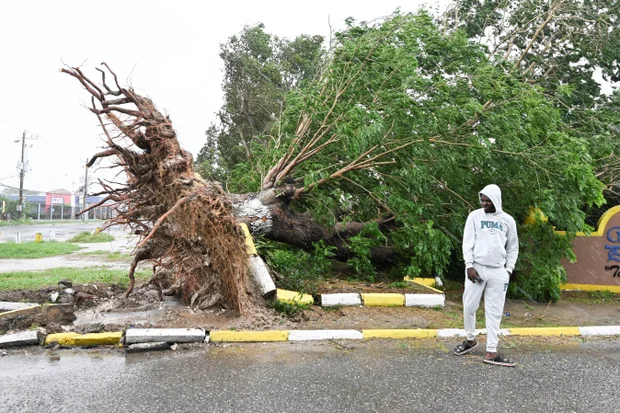Melissa’s wrath: From Jamaica to the Bahamas, a trail of death, floods, and destruction
As the storm continues its path over the Bahamas, disaster agencies remain on high alert. Emergency teams are bracing for further flooding, power outages, and displacement, while forecasters caution that the remnants of Melissa could still bring torrential rain to parts of the Caribbean and the U.S. southeast in the days ahead.

Hurricane Melissa, once a powerful Category 3 storm, has torn through the Caribbean, leaving a deadly trail across Jamaica, Cuba, Haiti, and now the Bahamas. Though it weakened to Category 1 by Wednesday afternoon, authorities warn it still poses a serious threat, with life-threatening storm surges, flash floods, and heavy rainfall expected across the Bahamas.
According to the U.S. National Hurricane Center (NHC), “hurricane conditions, life-threatening storm surge, and heavy rainfall” will continue across parts of the Bahamas through Thursday evening. The storm could generate surges up to 7 feet (2 meters) and flash floods in the southeastern islands. Residents have been urged to remain sheltered as Melissa lashes the archipelago.
Before hitting the Bahamas, Melissa devastated Haiti, where torrential rains caused catastrophic flooding. At least 25 people were killed and 10 reported missing after the La Digue river overflowed in the coastal town of Petit-Goave. “I am overwhelmed by the situation,” said Mayor Jean Bertrand Subreme, pleading for government aid as rescuers searched for people trapped under collapsed homes. Among the victims were ten children, according to Haiti’s civil defense agency, according to dw.com
Cuba also faced Melissa’s fury as the storm slammed into the island’s southern coast, prompting the evacuation of more than 735,000 people. Cuban President Miguel Díaz-Canel described “a very difficult early morning,” citing “extensive damage” across several provinces.
Even after being downgraded to Category 2, storm surges reaching 12 feet (3.6 meters) battered eastern Cuba, flooding towns and destroying infrastructure. Díaz-Canel warned that the hurricane would worsen the country’s ongoing economic crisis, already strained by fuel and food shortages.
Earlier in the week, Melissa pummeled Jamaica with winds exceeding 165 kph (105 mph), causing widespread flooding and destruction. Entire communities in Clarendon and St. Elizabeth were submerged, and four hospitals sustained heavy damage — one losing power completely. The U.S. offered to assist Jamaica’s recovery, with President Donald Trump saying Washington was “prepared to move” to help the Caribbean nation recover.
As the storm continues its path over the Bahamas, disaster agencies remain on high alert. Emergency teams are bracing for further flooding, power outages, and displacement, while forecasters caution that the remnants of Melissa could still bring torrential rain to parts of the Caribbean and the U.S. southeast in the days ahead.












